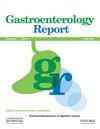Independent and additive effects of binge drinking and obesity on liver enzymes: a cross-sectional analysis using the Korean National Health Insurance Service data
IF 3.8
3区 医学
Q2 GASTROENTEROLOGY & HEPATOLOGY
引用次数: 0
Abstract
Abstract Background Binge drinking (BD) has been associated with elevated liver enzymes, but the joint association of BD and adiposity with liver enzymes is understudied. We aimed to examine the combined association of BD and obesity with elevated liver enzymes. Methods Data were obtained from 285,600 patients in the Korean National Health check-up program during 2009–2015. Level I BD (BD I) was defined as alcohol consumption of >60 g (men) or >40 g (women) on one occasion in the previous year. High-intensity BD (HIBD) corresponded to at least two times the BD I levels. General and abdominal obesity were defined by body mass index and waist circumference. Logistic regression was used to examine the independent and joint associations of BD and obesity with elevated alanine aminotransferase (ALT), aspartate aminotransferase (AST), and gamma-glutamyl transferase (GGT) levels. Relative excess risk (RERI), attributable proportion (AP), and synergy index (SI) were calculated to estimate the additive interaction effects. Results The mean age was 42.1 ± 0.03 years and 50.2% were women. Elevated ALT [odds ratio (OR) 1.09, 95% confidence interval (CI) 1.02–1.16], AST (OR 1.16, 95% CI 1.11–1.23), and GGT (OR 1.84, 95% CI 1.05–1.94) were associated with HIBD. Higher odds of elevated ALT (OR 3.57, 95% CI 3.43–3.71), AST (OR 3.47, 95% CI 3.37–3.58), and GGT (OR 2.10, 95% CI 1.98–2.12) were observed in individuals with general obesity. A similar trend was observed for abdominal obesity. The RERI, AP, and SI for the interaction effect of BD and general obesity were 23%, 7%, and 13% for elevated AST levels, and 67%, 24%, and 58% for elevated GGT levels, respectively. Similar effects were observed for the interaction between BD and abdominal obesity. Conclusions Obesity aggravated the odds of elevated liver AST and GGT levels in HIBD.暴饮和肥胖对肝酶的独立和叠加影响:利用韩国国民健康保险服务数据进行的横断面分析
摘要 背景 暴饮(BD)与肝酶升高有关,但暴饮和肥胖与肝酶升高的联合关系研究不足。我们旨在研究暴饮暴食和肥胖与肝酶升高的联合关系。方法 我们从 2009-2015 年期间韩国国民健康体检项目的 28.56 万名患者中获得了数据。I 级 BD(BD I)的定义是上一年的一次饮酒量大于 60 克(男性)或大于 40 克(女性)。高强度饮酒(HIBD)相当于饮酒量 I 级的至少两倍。全身肥胖和腹部肥胖以体重指数和腰围来定义。采用逻辑回归法检测 BD 和肥胖与丙氨酸氨基转移酶 (ALT)、天冬氨酸氨基转移酶 (AST) 和γ-谷氨酰转移酶 (GGT) 水平升高之间的独立关联和联合关联。计算了相对超额风险(RERI)、可归因比例(AP)和协同指数(SI),以估计相加的交互效应。结果 平均年龄为 42.1 ± 0.03 岁,50.2% 为女性。谷丙转氨酶(ALT)[几率比(OR)1.09,95% 置信区间(CI)1.02-1.16]、谷草转氨酶(AST)(OR 1.16,95% CI 1.11-1.23)和谷草转氨酶(GGT)(OR 1.84,95% CI 1.05-1.94)升高与 HIBD 相关。在全身肥胖者中观察到更高的谷丙转氨酶(OR 3.57,95% CI 3.43-3.71)、谷草转氨酶(OR 3.47,95% CI 3.37-3.58)和谷草转氨酶(OR 2.10,95% CI 1.98-2.12)升高几率。腹部肥胖也有类似趋势。在 BD 和全身肥胖的交互效应中,AST 水平升高的 RERI、AP 和 SI 分别为 23%、7% 和 13%,GGT 水平升高的 RERI、AP 和 SI 分别为 67%、24% 和 58%。在 BD 和腹型肥胖之间的交互作用中也观察到类似的效果。结论 肥胖会增加 HIBD 患者肝脏 AST 和 GGT 水平升高的几率。
本文章由计算机程序翻译,如有差异,请以英文原文为准。
求助全文
约1分钟内获得全文
求助全文
来源期刊

Gastroenterology Report
Medicine-Gastroenterology
CiteScore
4.60
自引率
2.80%
发文量
63
审稿时长
8 weeks
期刊介绍:
Gastroenterology Report is an international fully open access (OA) online only journal, covering all areas related to gastrointestinal sciences, including studies of the alimentary tract, liver, biliary, pancreas, enteral nutrition and related fields. The journal aims to publish high quality research articles on both basic and clinical gastroenterology, authoritative reviews that bring together new advances in the field, as well as commentaries and highlight pieces that provide expert analysis of topical issues.
 求助内容:
求助内容: 应助结果提醒方式:
应助结果提醒方式:


